Get your travel insurance, and head to beautiful Thailand!
Beaches, Temples and Forests galore. Purchase your travel cover for Thailand now, and get exploring.
The South-East Asian Country is located in the middle of the Indochinese Peninsula, flanked by Cambodia to the East, the Gulf of Thailand and Malaysia to the South, and the Andaman Sea to the West. Thailand is made up of 76 provinces, with the capital, Bangkok, being one of the smallest provinces, but also the most densely populated.
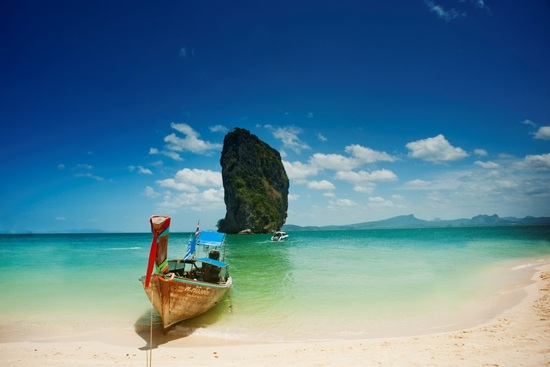
What makes Columbus a great travel insurance option for Thailand?
Thailand covers a large area of Southeast Asia, and there are plenty of activities on offer - even for the least adventurous of us! It’s therefore important that when planning your trip to Thailand, that the sports and activities you would like to participate in are covered on your travel insurance policy - especially before booking them! Doing this would mean you’re covered in case of cancellation of your pre-booked excursions, if you fall ill and can’t travel for example. We also cover over 150 sports and activities for free, but if your visit to Thailand includes some more thrilling activities which aren’t covered on our list, we have an adventure sports add-on available which will extend your options further.
Comparing your travel insurance to find the best deal is important, especially if you’re travelling from the UK or elsewhere in Europe. When you’re so far away from home, you want to have the peace of mind that you’re adequately covered should anything go wrong – our award winning insurance has got your back in Thailand, from Bangkok to Bueng Kan, and everything in between.
| Currency | Main language | Time Zone | High Season | Low Season | Rainy Season | |
|---|---|---|---|---|---|---|
| Fast Facts | Thai Baht (THB) | Thai | GMT+7 | November-April | June-September | June-October |
I want to travel around, am I covered if I hire a motorcycle?
The most popular method of transport around South-East Asia is undoubtedly via motorbike or scooter (moped), and this certainly rings true in Thailand. Our travel insurance will cover you as part of our free sports and activities on mopeds or motorcycles up to 125cc (although you won’t find many available for rent higher than 125cc!) However, you won’t be covered for Personal Liability, so make sure you sign up for adequate third-party insurance when negotiating your hire.
Thailand is also a popular destination for backpackers and gap year students, and if you’re weighing up your options for your next adventure in life, then you may want to take a look at our specialist backpacker insurance policy. Also known as our Globetrotter policy, this could be the perfect travel insurance option for you if you’re combining your trip to Thailand with visits to places such as Cambodia and Vietnam amongst other countries around the continent.
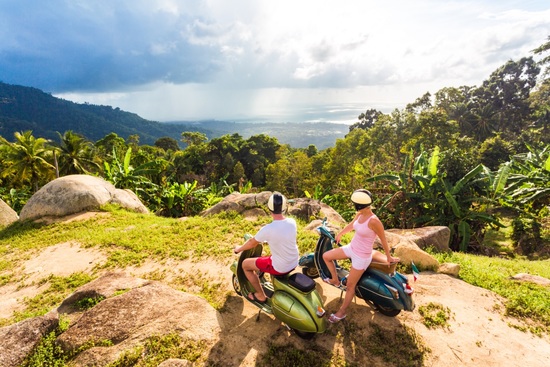
Destination unknown?
When purchasing your travel insurance for Thailand, you may wonder which destination you need to select in order to be covered correctly. Thailand is covered when you select the “Worldwide excluding USA, Canada, Mexico and the Caribbean” option,You may also be wondering how much your travel insurance to Thailand might cost. It completely depends on your circumstances, obviously if you’re travelling for longer and require a backpacker policy instead of single trip, or if you’re purchasing insurance as a couple or group, this will push the price up.
Some of our add-on products might also be of interest to you. South-East Asia has a number of active volcanoes, so you may be inclined to purchase our Extended Trip Disruption cover as a precaution to cover you for travel delay, abandonment, missed connection or missed departures caused by volcanic ash. Gadget cover is also popular, especially if you have a lot of tech that you’d like additional insurance for.
GET A QUOTE
Do I need a visa when visiting Thailand?
It depends on how long you’ll be visiting for, and how many times. If you’re planning on travelling to Thailand via land or air, you will be able to visit visa-free for 30 days on the Tourist Visa Exemption. However, you’re limited to pass through the land border twice per year, so if you’re doing a bit of island hopping, you may need to take this in to account.
You do have the option to apply for a Non-Immigrant Visa if the above rule is unavoidable for your plans. So if you plan on staying longer than 30 days, intend to work or study, or if you need to cross the land border more than twice (per calendar year), you need to have your visa approved prior to travel. A single entry visa is valid for 3-months from the date of issue, but the permitted length of stay is up to 90 days after your arrival in Thailand. The multiple entries visa is valid for a year, and the maximum length of stay is up to 1 year.
When travelling, make sure your passport has at least 6 months validity left on it, and that it’s in a good condition. Thai immigration may refuse entry if your passport is damaged, has pages ripped out, or is within 6 months of its expiry date.

Where are the best beaches?
If you want to visit the famous Maya Bay beach to re-enact your best Leo DiCaprio impressions from ‘The Beach’, then we’re sorry to be the bearers of bad news, but it has closed to tourists for the first time ever to give it a chance to recover from the strain of thousands of visitors per day. But that doesn’t mean there isn’t an alternative beach you can visit which is just as amazing.
Thailand is home to countless pristine sandy beaches, with the best ones being found along the south east coast, close to Phuket and Krabi. The pick of these beaches are often found on the islands dotted just off the coast of the mainland.
The island of Koh Kradan is part of the Hat Chao Mai National Park, and has hotel options if you want to stay a couple of nights. Every Valentine’s Day, the island is used for the annual underwater wedding festival – it’s worth a visit! If you don’t mind a little seaweed in exchange for the ultimate ‘desert island’ feel, then Kluai Beach on Koh Kood is for you. Although Koh Kood is Thailand’s fourth largest island, it’s still very natural, with not a lot there for tourists – perfect to escape the world for a day!
If you’re not interested in visiting the islands, and would rather visit the beaches on the mainland, Railay Beach in Krabi should be your first choice (although you can only visit it by boat due to the rough terrain nearby). Huge limestone formations line the bay, which provide some well needed shade during the day. It’s the perfect place to begin your trip if you’re doing some island hopping, nearby islands include Ko Poda, Bamboo Island and the Phi Phi islands.
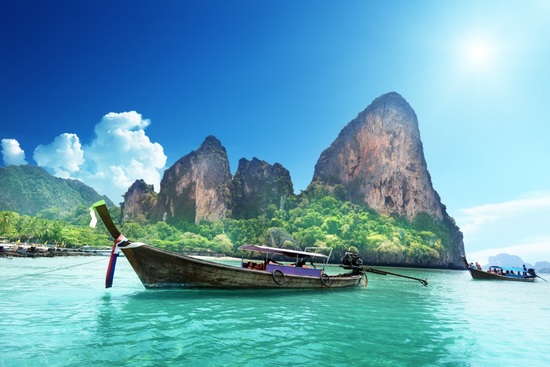
If you’re flying into, and staying in Phuket, Hat Laem Sing is a cove you shouldn’t miss. Large trees surround the beach, which makes the beach feel very private. The water is a dazzling shade of blue, making it ever so inviting. You’re also close by to the smaller Laem Sing beach, which has been described as a hidden treasure, and also Mai Khao beach, which despite being so close to the airport, is actually surprisingly peaceful.
GET A QUOTE
What can I do once I’ve seen the beaches?
There’s no denying that the sheer size of Thailand will make your head spin, and if you’re there for a sightseeing trip, you could find yourself having a rather busy itinerary. Below, we’ve split the activities you can see and do in the country by north, south, east and west, which should help you when it comes to planning.
- North: The Golden Triangle – The point where Thailand, Myanmar (Burma) and Laos meet. The actual point is in the middle of the Mekong River, so if you want to really say you’ve been there, hop on one of the hire boats and you can see the other countries up close.
- South: Khao Sok National Park – Located between Phuket, Krabi, Khao Lak and Koh Samui, the Khao Sok National Park is one of the most popular destinations in Southern Thailand. See the floating raft houses, explore the oldest evergreen rainforest in the world, and try to keep count of the amount of wild animals you see!
- East: For a true culture tour, head to the rice paddies of Isan. Around 6 hours by car, East of Bangkok, you won’t find many tourists here, which means it’s perfect to experience a bit of local life. Immerse yourself at the market, and taste the local produce – or go one step further and try a local delicacy of the salty snack we call crispy insects!
- West: Mae Tuen Wildlife Sanctuary – Okay, this one is kind of north-west, but it’s worth the visit all the same. Located within a complex of steep mountains, you can navigate the area via foot, or via river rafting. Keep your eyes peeled for the ancient salamander which lives in the forest on the Doi Soi Malai (highest peak in the sanctuary).
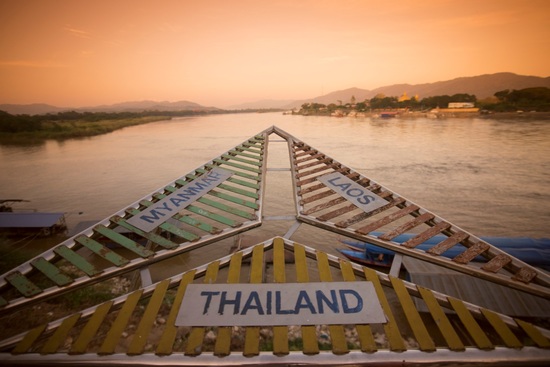
Is there anything else I should know before I go?
You may think you’re now ready for your departure, but have you thought about the little things? Make sure you have your Thai Baht ready – if you’re planning on bringing a large sum of cash, it might be worth checking your options at loading some funds to a pre-paid card to use at hotels and other places which accept card payment, then save your cash for food, drink and souvenirs from market stalls.
Obviously, Thai is the first language spoken here, but in the main cities and some of the larger towns, most Thai will have a (sometimes interesting) English translation alongside it. If you’re willing to give some of the more simple Thai words a try, then most Thai people are more than happy to give you a helping hand with the pronunciation. However, as you’d expect, the further off the beaten track you go, the less chance people will speak any ounce of English.
Like most of Southeast Asia, Thailand’s rainy season lasts the best part of half the year (between June and October). You can visit during this time, but you’ll run the risk of being caught up in a monsoon which would more than likely lead to flooding. The price will be cheaper travelling in rainy season, but comes with a significantly higher risk.
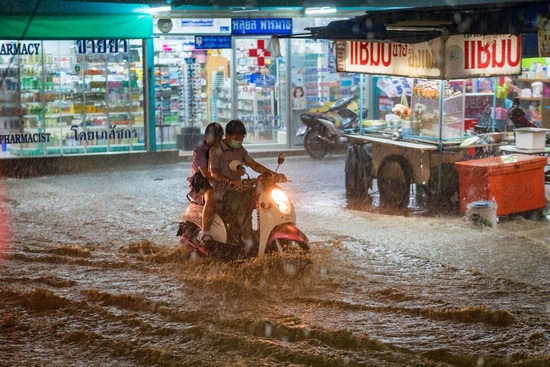
There are some festivals you may want to take a look at if you’re travelling during high season. These include Loi Krathong, Songkran (Water Festival/Thai New Year) and the Wonderfruit Festival. The Ghost Festival takes place in June or July, then there’s the Lantern Festival in November, and the Candle Festival in July. You can read more about these festivals on our blog post here.
And last but not least, respect the culture. Thai people believe the head is the most sacred part of their body, so don’t attempt to touch a local on the head, no matter what your sentiments are. Smiling is contagious, and a happy face will get you a long way with the locals, so prepare your cheek muscles for the work they will be doing!
GET A QUOTE